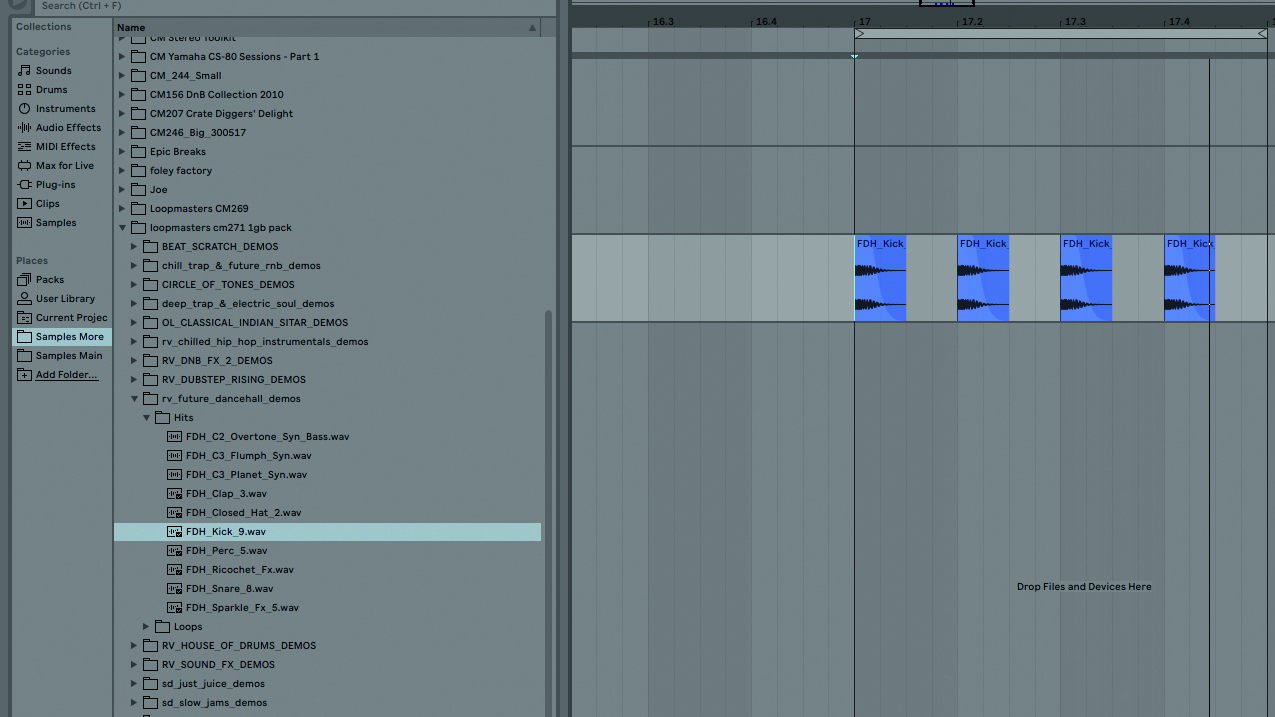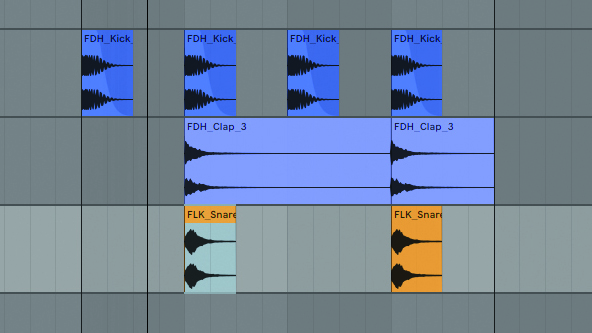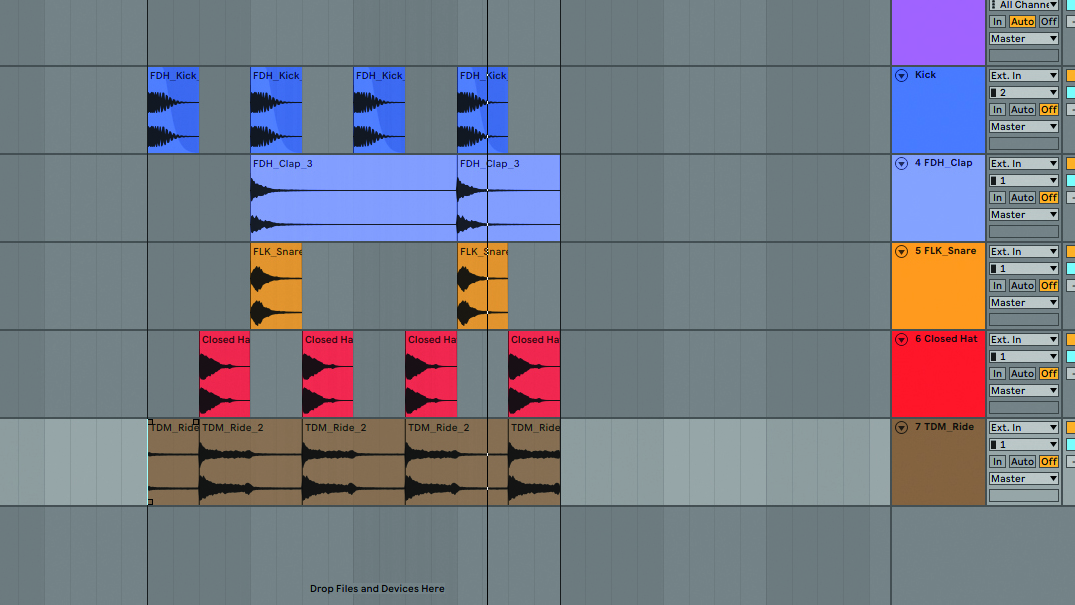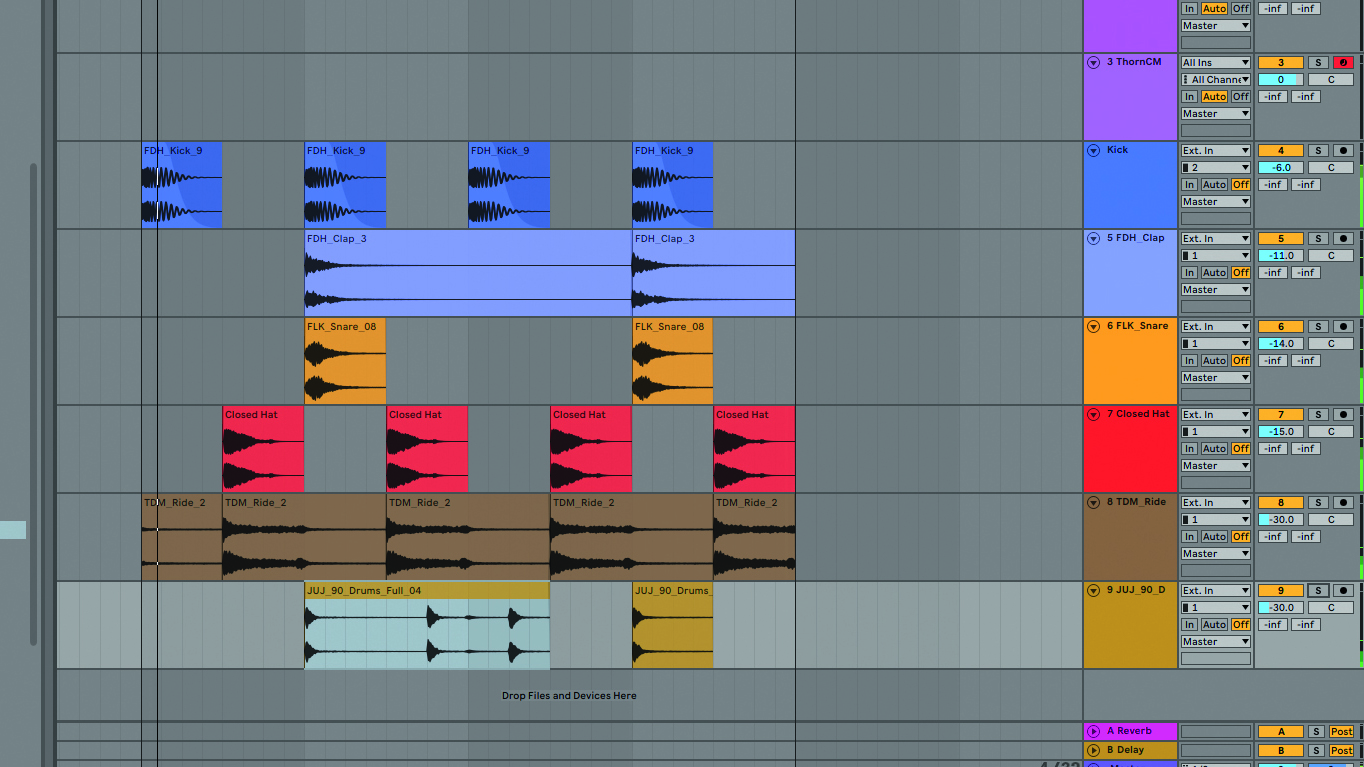Build a bassline house beat in 4 steps
Learn the fundamentals of bassline beat
The original sound of bassline house was characterised by four-to-the-floor drums similar to those used in speed garage, alongside chopped-up RnB vocals, orchestral stabs and warping synth basses.
Today’s bassline house tracks are broadly similar in terms of the sound palette used, but the production values and arrangements more typically align with styles such as jump-up DnB, with much greater emphasis placed on the weight of the build-ups, drops and overall mix.
Here we'll take you over creating the backbone of a bassline track - the beat.

Step 1: Let’s build our drums in a 128bpm project. Import Kick.wav (all the samples in this tutorial are available for download), then pitch it up one semitone to leave extra room for sub-bass. Shorten each kick to half a beat’s length, and add a fade to reduce the boomy tail, giving more punch. Duplicate the kick over four beats.

Step 2: Turn the kick down by -6dB to preserve headroom. Next, import Clap.wav onto beats two and four with the volume turned down to -10dB. A low snare layer will add extra power – import Snare.wav on beats two and four; turn it down to around -14dB.

Step 3: We’ll use two layers for the offbeat hat; a closed hat for attack, and a ride cymbal for ‘splash’. Import Closed Hat.wav and Ride.wav onto fresh audio channels, then copy them to each offbeat. Turn both channels down until the offbeat hat blends into the mix. Copy the last ride’s tail to the start of the loop.

Step 4: A sampled breakbeat is perfect for adding a ghost snare shuffle. Add Breakbeat.wav on a fresh channel, then pitch the break up by +5 semitones to give it a lighter feel. Cut the kick drums out of the breakbeat to leave just the snare hits. Turning the break down to around -30dB sits it back in the mix.
Get the MusicRadar Newsletter
Want all the hottest music and gear news, reviews, deals, features and more, direct to your inbox? Sign up here.
Computer Music magazine is the world’s best selling publication dedicated solely to making great music with your Mac or PC computer. Each issue it brings its lucky readers the best in cutting-edge tutorials, need-to-know, expert software reviews and even all the tools you actually need to make great music today, courtesy of our legendary CM Plugin Suite.










